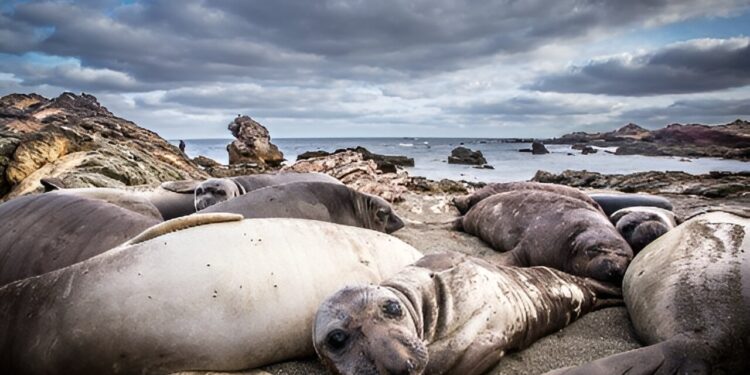Northern elephant seals. Credit: Bielefeld University, Martin Stoffel
Northern elephant seals have made a remarkable comeback after narrowly escaping extinction through hunting, but new research reveals lasting genetic effects in today’s population.
Hunted for the oil in their blubber, genetic analyzes suggest that the hundreds of thousands of northern elephant seals that lived in the Pacific Ocean had been reduced to a population of fewer than 25 animals by the start of the 20th century.
The population has since recovered to around 225,000 individuals, but the new research, led by the universities of York and Bielefeld (Germany) and published in Nature ecology and evolution– suggests that the drastic population decline resulted in the loss of many genes from the northern elephant seal gene pool, impacting its genetic diversity and health.
Threat to survival
The researchers, who combined genetic data, health records, population size modeling and genetic simulations to carry out the study, did not observe the same pattern in the southern elephant seal , closely related, which did not experience a near-extinction event.
The results demonstrate how a drastic population decline can wipe out a species’ genetic diversity, increasing the risk of inbreeding and threatening its survival. According to the researchers, they offer important information for species conservation and ecosystem management.
Reconstruction of the recent demographic history of the northern elephant seal based on RAD sequencing data from 96 individuals. Credit: Ecology and evolution of nature (2024). DOI: 10.1038/s41559-024-02533-2
Unique history of the population
Lead author of the study, Professor Kanchon Dasmahapatra, from the Department of Biology at the University of York, said: “Our study illustrates how the unique population history of a species shapes its genetic diversity.
“Severely reduced genetic diversity, including loss of copies of beneficial genes, could harm the ability of northern elephant seals to cope with future environmental changes, including those caused by anthropogenic climate change, habitat of the species, or even natural threats such as epidemics.
Lead author of the study, Professor Joseph Hoffman from the University of Bielefeld, added: “All individuals of a species carry harmful mutations, although their effects are usually hidden. However, inbred individuals may face health problems when these mutations are exposed.
“We looked at several key health characteristics in these seals, including body weight, blubber thickness and susceptibility to disease. To our surprise, we found no signs of health problems linked to inbreeding “We believe that the severe population decline could have eliminated many harmful mutations.”
More information:
Joseph I. Hoffman et al, Genomic and adaptive consequences of a near-extinction event in the northern elephant seal, Ecology and evolution of nature (2024). DOI: 10.1038/s41559-024-02533-2
Provided by the University of York
Quote: Seal species bear ‘genetic scars’ after being hunted to brink of extinction, new research reveals (September 27, 2024) retrieved September 28, 2024 from
This document is subject to copyright. Except for fair use for private study or research purposes, no part may be reproduced without written permission. The content is provided for informational purposes only.



